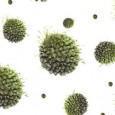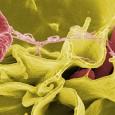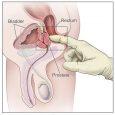When people think of STDs, they usually think of infections that you can get from having intercourse. After all, the name says it all: sexually transmitted diseases, i.e. diseases that get transmitted through sex.
However, it’s important to clear several things. First, sexual education classes often focus on penile-vaginal intercourse during discussions on STDs and other topics, but this isn’t the only type of intercourse that people are having.
Second, penile-vaginal sex isn’t the only way to catch an STD. There are several activities that will increase your chances of getting an STD, such as the following:
Disclaimer: condom-sizes.org is supported by its readers. When you buy through links on our site, we may earn an affiliate commission. Learn more.
1. Sharing items with an infected person
You probably won’t let someone else borrow your toothbrush, but you might not have any qualms about letting your roommate, your FWB (friends with benefits), or Tinder date borrow your razor. After all, it’s just a razor, right?
Not really. When someone with HIV or Hepatitis A, B, or C uses the razor, the sharp blade can break his skin and cause the STD virus or bacteria to get on the blade.
So, when you get the blade back and use it, the microorganisms can transfer to you and give you an infection when your skin is broken by the blade.
Destruction of skin barrier is required for the infection transmission but that doesn’t mean you’ll see blood whenever the skin is breached by that blade.
Infectious agents can get onto razor blade through micro vascular damage too.
The same happens when you share towels, clothes, and sheets. A parasite called Trichomoniasis can live outside the body for 45 minutes, which means that they can stay on fabrics and be transferred to from one person to another during this time frame [1].
This is also the case for pubic lice (aka crabs). Aside from being present in an infected person’s nether regions, they can also be transferred to his clothes and bedding. If you wear that person’s clothes or lie on his bed, you might find yourself with itchy, unwanted hitchhikers.
2. Sitting on a toilet
Typically, you won’t be infected with an STD when you sit on a toilet. But, under the right conditions, it can cause you to acquire a sexually transmitted infection.
One example: a girl with an STD uses the toilet in a public restroom and leaves some body fluids on the seat.
You’re the next person in the line so, when the girl gets out of the cubicle, you go into the stall and sit on the seat [2].
The fluids left on the seat touches your genital area, and voila! You’re now the lucky winner of a brand-new STD. This is why it’s important to squat instead of sit when you’re in a public toilet or avoid it altogether if you can.
3. Getting on a tanning bed
Most people expect to get skin cancer when they go to a tanning salon — not an STD. However, this is definitely what you’ll get if the person who uses the tanning bed before you has Molluscum contagiosum, a type of viral infection that usually affects the genital region [3].
The only good news about this is that the virus eventually goes away on its own, but you’ll experience panic for a few days when the itchy raised bumps it produces spreads like wildfire.
4. Eating contaminated food
If the person who prepares your food (either at home or a restaurant) uses the bathroom without washing his hands, he’ll most likely transfer a lot of microorganisms to your food. One of these might be Hepatitis A.
It’s a liver infection that’s considered a sexually transmitted disease since you can get it from having unprotected sex with an infected person.
However, you can also get the Hepatitis A virus from eating food that has been contaminated with the fecal matter of an infected person.
5. Receiving donated blood
Technically, you can acquire HIV if you undergo a blood transfusion and receive blood from a donor who has HIV.
However, this is not really a problem nowadays since most facilities like the Red Cross have advanced screening processes in place that help them detect HIV-1 and HIV-2 antibodies in donated blood.
Still, the fact remains that blood transfusion can be a possible way of getting HIV, so make sure that any blood you receive through transfusion is obtained from a reliable facility.
6. Touching someone and/or yourself
If your partner has an STD and you touch his genital area, it’s highly likely that the virus or bacteria will transfer onto your hand.
Then, if you touch yourself with the same hand, the microorganisms will transfer from it to the body part you touched. For instance, if your hand gets contaminated with Neisseria gonorrhoeae bacterium and you touch your eyes, they will get infected with gonorrhea.
You’ll know if you have a gonococcal ocular infection since you’ll experience eye pain and sensitivity to light and notice a pus-like discharge from your eyes [4].
7. Kissing
Many people consider kissing to be a non-sexual activity, but it’s important to note that you can get an STD simply by kissing someone [5].
This is especially true if your partner has oral herpes, which stays with the infected person for life but doesn’t always manifest symptoms.
Some people with oral herpes develop fluid-filled blisters that appear in clusters and start out red but eventually scab over and peel, while others never actually develop these blisters.
So, even if you’re kissing someone who’s blister-free, it’s not an assurance that you’re safe from oral herpes.
STDs can be transmitted from one person to another even without penile-vaginal penetration. To keep yourself safe and healthy, you’ll want to use condoms, watch out who you get involved with and have yourself and your partner/s tested for STDs on a regular basis.
Being careful with your food and clothes as well as the surfaces you touch is also hugely helpful.
Image: Bigstock
References:
-
1. https://www.healthline.com/health/how-can-you-get-trichomoniasis-if-no-one-cheats
2. https://www.webmd.com/balance/features/what-can-you-catch-in-restrooms
3. https://www.cdc.gov/poxvirus/molluscum-contagiosum/transmission.html
4. https://www.plannedparenthood.org/learn/stds-hiv-safer-sex/gonorrhea
5. https://kidshealth.org/en/teens/kissing.html






 Peter started condom-sizes.org in 2011 after realizing what a difference using a proper condom size really makes! In 2012 he published an e-book called 'How to Find Your Perfect Condom' which is still available on
Peter started condom-sizes.org in 2011 after realizing what a difference using a proper condom size really makes! In 2012 he published an e-book called 'How to Find Your Perfect Condom' which is still available on
Thanks for pointing out that non-penetrative sex can still make people at risk of getting HIV. A friend of mine has been vomiting and feeling weak for almost a full month now so I’m kind of worried that it might caused by something severe. I plan to accompany him to an HIV testing facility once he feels a bit stronger to get up and go out.